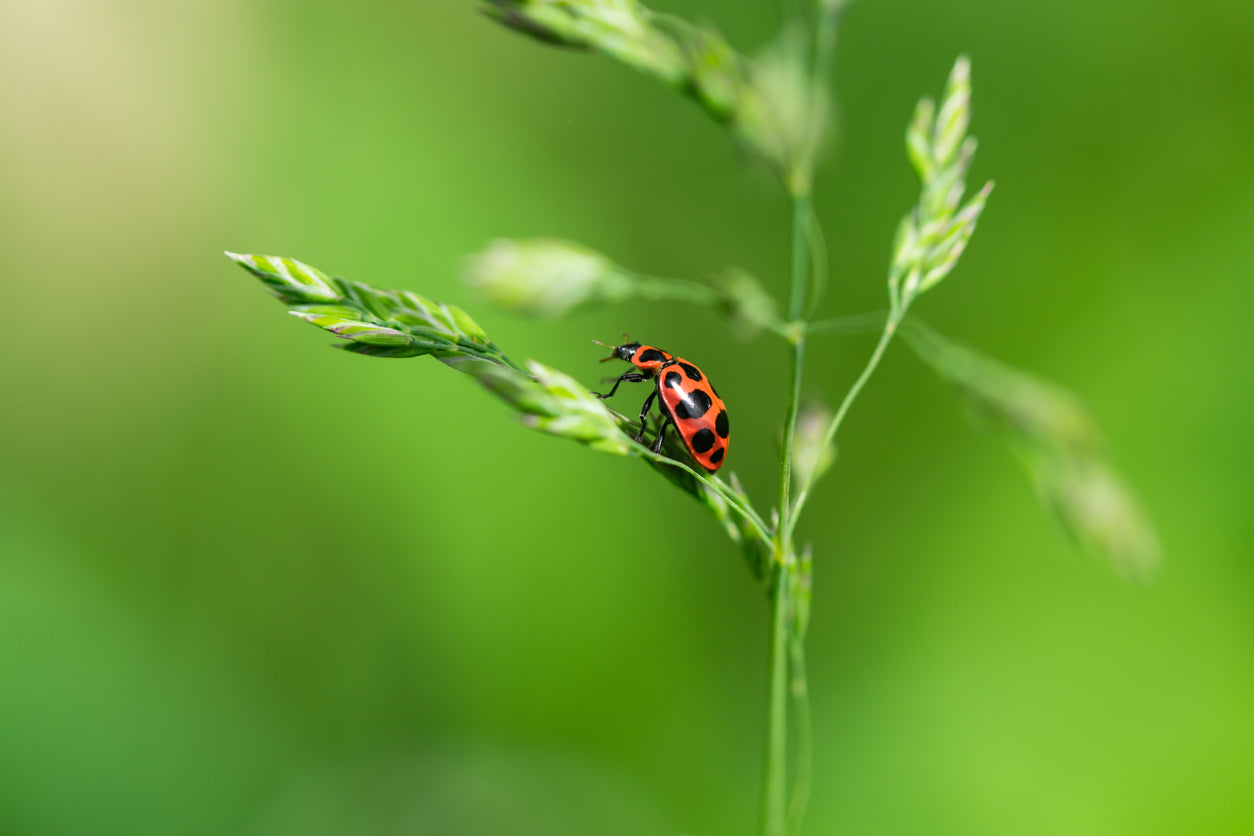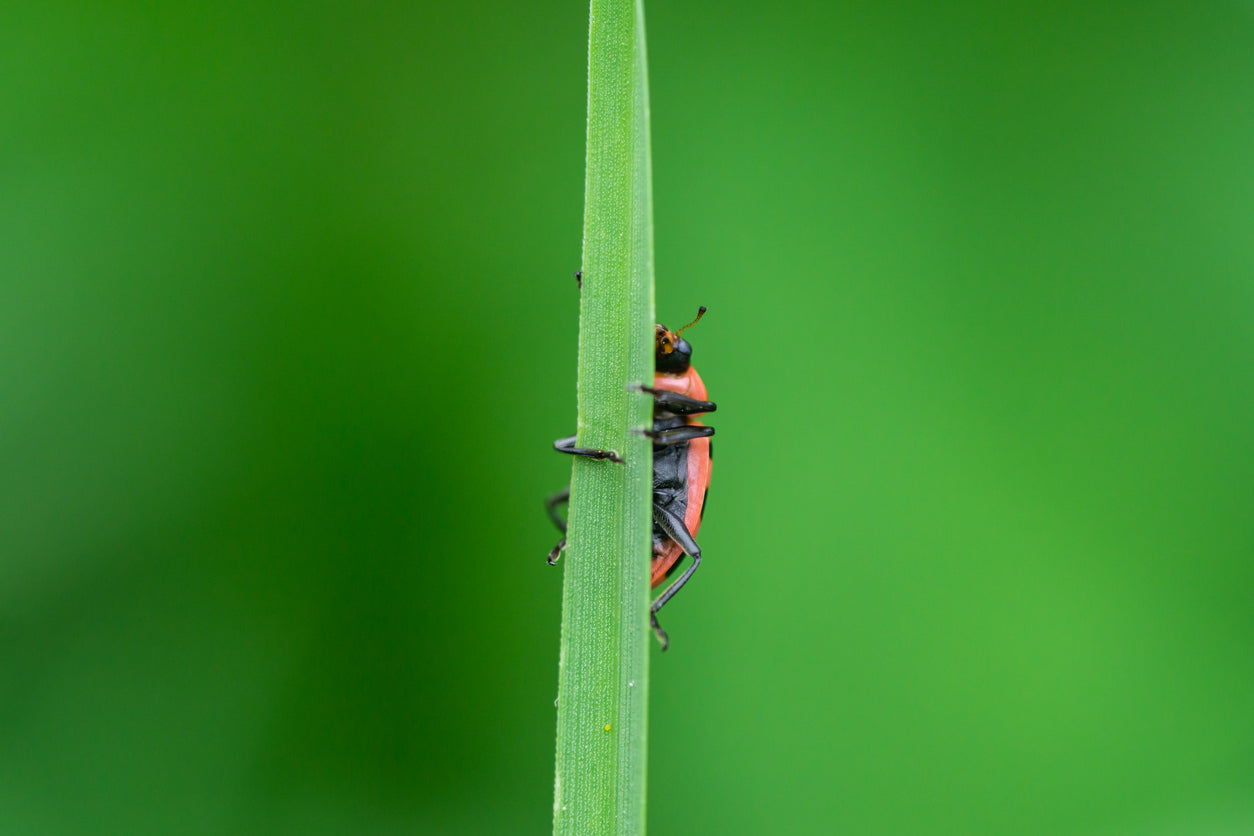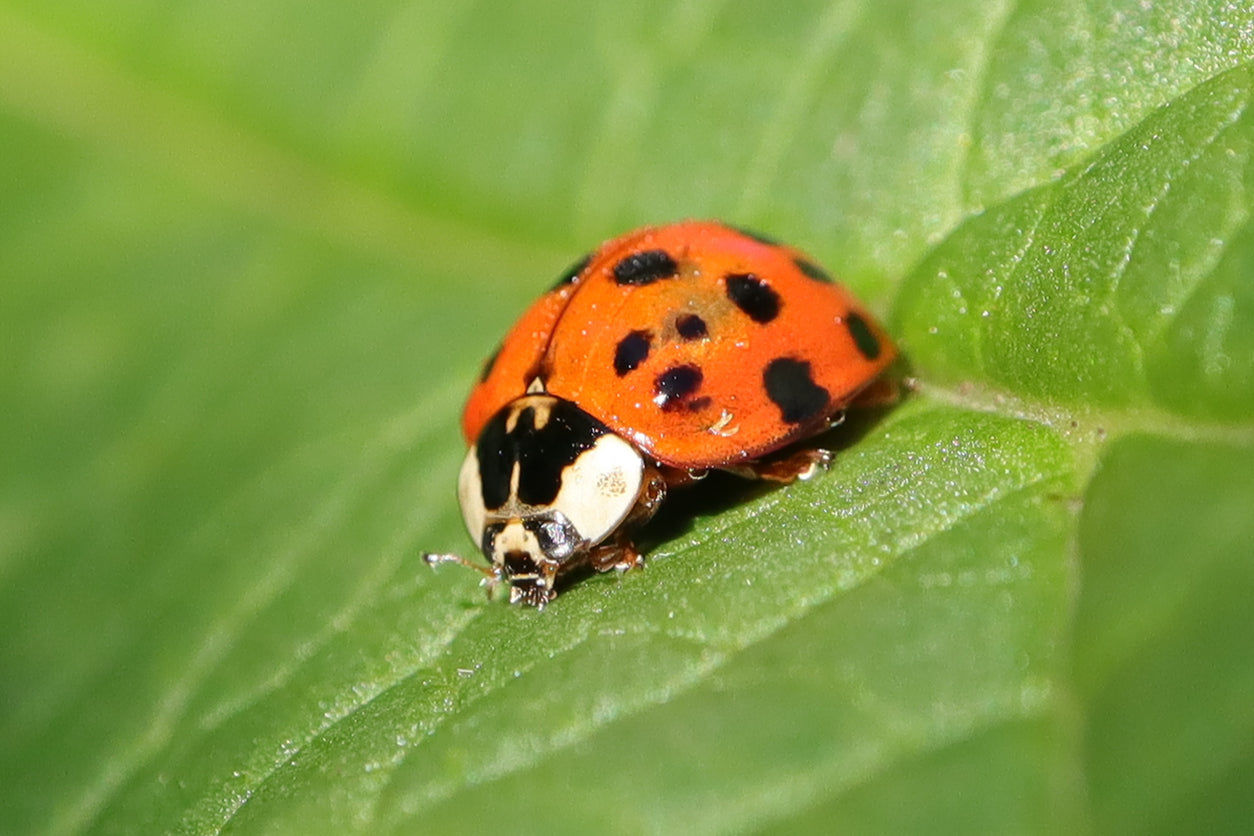Add description, images, menus and links to your mega menu
A column with no settings can be used as a spacer
Link to your collections, sales and even external links
Add up to five columns
Add description, images, menus and links to your mega menu
A column with no settings can be used as a spacer
Link to your collections, sales and even external links
Add up to five columns

What Do Ladybugs Eat?
By Spencer McManamna August 15, 2024 5 min read
Have you ever wondered what our ladybug friends like to munch on? It's a surprisingly varied diet! Hungry ladybugs will act as protectors for your garden. Their diet plays a crucial role in their ecological importance, as they primarily feed on aphids and other small pests that can damage plants.
By preying on these insects, ladybugs act as natural pest controllers, helping to maintain the balance in gardens and agricultural settings. But that's not all! Read on to learn more about the incredible things our little ladybug friends like to snack on!
What Types of Foods Do Ladybugs Eat?
Ladybugs exhibit a fascinating variety in their dietary preferences depending on their species and habitat. While many are renowned for their voracious appetite for aphids, others may consume different pests or even rely on alternative food sources like pollen and nectar, showcasing the diverse ecological roles these fascinating bugs play out! Ladybugs will enjoy snacking on the following:
Leaves
While ladybugs are primarily known for their preference for aphids and other small insects, some species occasionally turn to leaves as a supplementary food source. However, leaves are not a primary nutritional choice for most ladybugs, as they offer limited nutritional value compared to the protein-rich insects they typically consume. The value of leaves lies in their role as a habitat and an important source of water!
Seeds
Seeds serve as an important food source for various ladybug species, particularly those that exhibit a more diverse diet beyond their primary consumption of aphids and other soft-bodied insects. Multicolored Asian Ladybug (Harmonia Axyridis, found throughout eastern Asia) have been observed feeding on seeds, especially when other food sources are scarce. Seeds provide essential nutrients, including proteins, fats, and carbohydrates, which are important for their health and survival.
Fungus
Many species of ladybug consume fungus and fungal structures as part of their diet, particularly where traditional prey like aphids is scarce. Ladybugs such as the Sordid Ladybug (Scymnus (Nephus) corticis) and Seven Spot Ladybird (Coccinella septempunctata) have been documented consuming fungal matter, which provides a range of nutrients including proteins, vitamins, and essential fatty acids. These ladybugs are typically found in temperate and subtropical regions such as the damp, forested areas of Europe and North America, where mushrooms and other fungi are abundant.
Nectar
Nectar is the sweet and nutritious liquid produced by plants. Nectar serves as a crucial food source for ladybugs, providing them with essential sugars that fuel their energy needs. Despite being more commonly known for their consumption of aphids and other pests, several ladybug species also rely on nectar for nourishment, particularly when their primary prey is scarce. For example, the Coccinella septempunctata, or seven-spotted ladybug, found across Europe and parts of Asia, often feeds on nectar from various wildflowers. Harmonia axyridis, also known as the multicolored Asian lady beetle, similar to the ladybug, which has spread to North America from Asia, loves to feed on nectar in addition to pesky aphids.
Pollen
Ladybugs don't just spread pollen - they consume it! Pollen is rich in proteins, fats, vitamins, and minerals, and offers significant nutritional value for ladybugs, supplementing their diet and supporting their reproductive health. Although ladybugs are predominantly known for preying on aphids and other small insects, several species also consume pollen, especially when aphid populations are low. In North America, the Harmonia axyridis, or multicolored Asian lady beetle, has adapted to consuming pollen from various flowers. Another species, Epilachna varivestis, known as the southern corn rootworm ladybug, also uses pollen as a secondary food source!
Plants
While ladybugs are best known for their role in consuming aphids and other pests, some species have adapted to feed on plant tissues, such as leaves and roots, especially in times when their usual prey is scarce. For example, the Epilachna varivestis, or southern corn rootworm ladybug native to the southeastern United States, feeds on the leaves of corn plants and other crops. The Epilachna vigintioctopunctata, or Twenty-Eight-spotted ladybug (found in parts of Africa and Asia) also includes plants as part of its diet.
Fruit
As you can expect, ladybugs love to munch on delicious fruit! Fruit, rich in sugars and essential nutrients, can serve as a supplementary food source for ladybugs, though it is not their primary diet. While ladybugs are chiefly known for consuming aphids and other small insects, some species opportunistically feed on fruit, especially when their usual prey is not available. The sugars in fruit provide a quick energy boost, and the vitamins and minerals support their nutrition. For example, our own Pink-Spotted Ladybug found throughout North America, is known to feed on overripe fruit as an alternative to its usual diet.
Vegetables
Vegetables provide essential nutrients such as vitamins, minerals, and sugars, which can benefit ladybugs, especially in maintaining energy and supporting reproductive health. The Epilachna varivestis, or southern corn rootworm ladybug, primarily feeds on the leaves of corn plants. The Epilachna paeninsularis, or the Mexican bean beetle, which inhabits parts of Central and North America, feeds on many leguminous vegetables.
Sugar
Sugar, a high-energy carbohydrate, provides significant nutritional value for ladybugs and a quick source of energy that supports their active lifestyle. While ladybugs are predominantly insectivorous, feeding primarily on aphids and other small pests, some species have adapted to consume sugary substances when their primary food sources are scarce. The Harmonia axyridis, or multicolored Asian lady beetle, native to Asia but now widespread in North America, is known to feed on sugary juices of fruits.
Eggs
Eggs, particularly those of other insects, can serve as an important food source for ladybugs, offering rich proteins and fats essential for their growth and development. While ladybugs are renowned for consuming aphids and other small pests, several species also prey on the eggs of insects. For example, the Coccinella septempunctata, or seven-spotted ladybug, found across Europe and parts of Asia, may consume the eggs of aphids and other small insects as part of its diet. The Epilachna varivestis, or southern corn rootworm ladybug, which resides in the southeastern United States, has also been observed consuming insect eggs.
How Much Do Ladybugs Eat?
Ladybugs are voracious consumers of aphids, playing a valuable role in natural pest control and crop health! An individual ladybug can devour up to 5,000 aphids during its lifetime, which spans from a few months to over a year depending on the species and environmental conditions.
The foraging habits of these beetles are highly effective; as they actively seek out aphid colonies on plants, consuming them with remarkable efficiency. This predatory behavior not only helps in maintaining the balance of aphid populations but also benefits agriculture by reducing the need for chemical pesticides. By regulating aphid numbers, ladybugs help to protect important ecosystems and some of our most valuable (and tasty) crops!
Related products
Also in Ladybugs

All About Ladybugs, Climate and Temperature
October 10, 2024 4 min read
Nature lovers have often wondered how our little ladybug friends manage to survive a season that can often be quite harsh for insects. Read on to discover how ladybugs survive and thrive in both high and low temperatures, and what the future holds for them with the approach of climate change.

Spot the Difference: Ladybug and Asian Beetle
July 24, 2024 5 min read
What's the difference between common ladybugs and the Asian Lady Beetle(pictured above)? The many answers may surprise you! Read on to learn more about the fascinating contrasts between these often misattributed species!

Enter Your Voucher Code Below
If you are experiencing difficulty redeeming your voucher on your desktop, please use a mobile device for a better redeeming experience.

We are unable to combine redemption fees. If you are redeeming 1-5 voucher codes, please complete separate purchases through our website for each voucher. If you are redeeming 6+ vouchers, please email us at customerservice@insectlore.com with your voucher codes and shipping address and we'll send you a custom invoice for payment.
Thank you for Redeeming your voucher!
You redeemed a $title

Don't miss this special one Time Offer.
Check the Box to Add this Special Offer to your Cart

Don't miss this special one Time Offer.
Check the Box to Add this Special Offer to your Cart
It looks like you are an Insect Lore UK/EU customer! You are visiting the Insect Lore USA website.
Click Insect Lore UK/EU website to be redirected to insectlore.co.uk.





